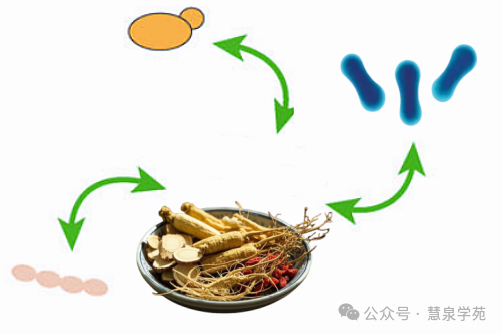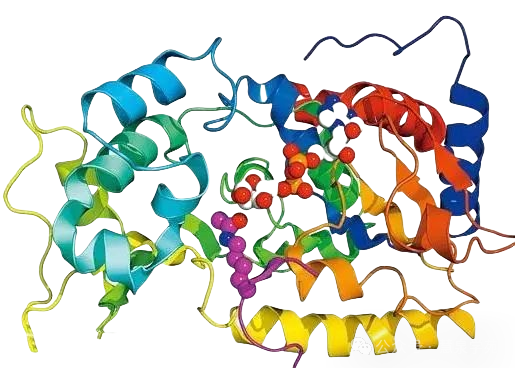
In the field of microbial fermentation production of Traditional Chinese Medicine (TCM), the selection and regulation of nitrogen sources play a crucial role in the yield and quality of the products, while the rational use of carbon sources is equally important.Throughout the fermentation process, nitrogen and carbon sources work together to influence microbial growth and metabolism, ultimately determining the final fermentation outcome.Let us delve into the key points regarding nitrogen and carbon sources in microbial fermentation of TCM.


🔍 Microbial Fermentation Carbon Sources
🔍 1. Types of Nitrogen Sources
Nitrogen sources can be broadly classified into inorganic and organic nitrogen sources, each possessing unique characteristics and functions.


🔍Inorganic Nitrogen Sources:
Common inorganic nitrogen sources include ammonium salts, such as ammonium sulfate and ammonium chloride, as well as nitrates, such as sodium nitrate and potassium nitrate.These nitrogen sources have relatively simple compositions and can be quickly recognized and absorbed by microorganisms in the fermentation system.During the initial fermentation phase, microorganisms require a large amount of nutrients for rapid growth and reproduction; inorganic nitrogen sources act like timely rain, providing sufficient nitrogen support for the rapid growth of the microbial population, allowing for significant proliferation in a short time.However, inorganic nitrogen sources are not without drawbacks.When used in excess, they can inhibit the synthesis of secondary metabolites.For example, in the synthesis of secondary metabolites such as antibiotics, excessive inorganic nitrogen can interfere with metabolic pathways within the microorganisms, hindering the expression of genes related to antibiotic synthesis, thereby suppressing antibiotic production.


🔍Organic Nitrogen Sources:
Examples of organic nitrogen sources include soybean meal, corn steep liquor, and yeast extract. The importance of organic nitrogen sources in fermentation production lies in their rich composition. In addition to containing nitrogen, they are also rich in amino acids, vitamins, growth factors, and other complex components that are crucial for microbial growth and metabolism. Although microorganisms absorb organic nitrogen sources more slowly compared to inorganic ones, they excel in enhancing the synthesis efficiency of specific products, especially in the production of secondary metabolites, where their role is irreplaceable. These rich nutrients can provide comprehensive support for the complex metabolic processes of microorganisms, stimulating specific metabolic pathways within the microorganisms, thereby significantly promoting the synthesis of secondary metabolites.

🔍 2. Nitrogen Source Regulation Strategies
Throughout the fermentation process, the dynamic regulation of nitrogen sources is key to achieving a delicate balance between microbial growth and product accumulation. Below are some widely used regulation strategies in practical production.

🔍Initial Rapid Growth Phase:
At the beginning of fermentation, the microbial population is like hungry young ones, with a pressing need for nutrients, requiring rapid growth to reach a certain biomass. At this time, it is wise to add an appropriate amount of inorganic nitrogen sources. Inorganic nitrogen sources can be quickly absorbed and utilized by the microbial population, converting into various substances needed for growth, effectively accelerating their growth rate and laying a solid foundation for the subsequent fermentation process.


🔍Secondary Metabolite Synthesis Phase:
As microbial growth enters a stable phase, the focus of fermentation gradually shifts from growth to the synthesis of secondary metabolites. At this point, continuing to supply large amounts of inorganic nitrogen sources may not only fail to promote product synthesis but may also inhibit it. Therefore, it is necessary to adjust the nitrogen source strategy in a timely manner, reducing the amount of inorganic nitrogen supplied and increasing the supply of organic nitrogen sources. The rich nutrients in organic nitrogen sources can provide sufficient raw materials and energy for the synthesis of secondary metabolites, activating the enzyme systems related to the synthesis of secondary metabolites and promoting the efficient synthesis of specific products.

🔍Dynamic Supplementation Strategy:
To avoid the premature depletion of nitrogen sources leading to limited microbial growth or the excessive accumulation of nitrogen sources causing a series of adverse effects, a dynamic supplementation strategy has emerged. During fermentation, advanced detection technologies can be used to monitor the nitrogen source concentration in real-time, akin to installing a precise “nitrogen source monitoring device” in the fermentation process. Based on monitoring data, nitrogen sources can be supplemented in a timely manner to ensure that the nitrogen source concentration in the fermentation broth remains at an appropriate level, meeting the normal metabolic needs of the microorganisms while ensuring efficient product synthesis, keeping the fermentation process in an optimal state.

🔍 3. Supplementing Carbon Sources
In the microbial fermentation of TCM, carbon sources are essential energy and material bases for microbial growth and metabolism. Sucrose and honey are often used as high-quality carbon source supplements.

🔍Sucrose:
Sucrose is a disaccharide composed of glucose and fructose. Its molecular structure is relatively simple, allowing microorganisms to easily decompose and utilize it. Adding sucrose during fermentation can quickly provide sufficient carbon sources for microorganisms, meeting their energy needs for growth and metabolism. The addition of sucrose can also help regulate the osmotic pressure of the fermentation broth, creating a suitable living environment for microorganisms. Additionally, the presence of sucrose promotes metabolic activities in microorganisms, accelerating the fermentation conversion process and improving product generation efficiency.


🔍Honey:
Honey, as a natural sweet substance, has a complex composition and is rich in nutrients. In addition to containing a large amount of glucose and fructose, it is also rich in various vitamins, minerals, amino acids, and bioactive components. These abundant nutrients not only provide high-quality carbon sources for microorganisms but also supply other necessary growth factors, promoting microbial growth and metabolism. The bioactive components in honey may also positively influence microbial metabolic pathways, helping to induce the production of specific enzyme systems, thereby promoting the fermentation transformation of TCM components and enhancing the quality and bioactivity of the fermentation products.

🔍4. Relationship Between Nitrogen Source Selection and Product Types
Different types of microorganisms and product types have significant differences in their nitrogen source requirements, which necessitates precise selection of nitrogen sources based on specific conditions in practical production.

🔍Antibiotic Production:
In the fermentation production of antibiotics, the use of organic nitrogen sources often leads to significant increases in yield. This is because the amino acids and growth factors contained in organic nitrogen sources can interact positively with the antibiotic synthesis metabolic pathways within microorganisms, activating secondary metabolic pathways and providing abundant precursor materials and necessary enzyme activators for antibiotic synthesis, thereby effectively improving the yield and quality of antibiotics.


🔍Enzyme Production:
The production of enzyme preparations requires a balance between microbial growth and enzyme synthesis.In this process, the rational combination of inorganic and organic nitrogen sources is crucial.Inorganic nitrogen sources can meet the rapid growth needs of microorganisms in the early fermentation phase, allowing them to quickly reach a certain biomass;while organic nitrogen sources provide the necessary nutritional support for enzyme synthesis in subsequent stages, promoting the expression of enzyme genes and the synthesis of enzyme proteins, ensuring the efficient production of enzyme preparations.


🔍Organic Acid Production:
Taking the production of organic acids such as citric acid and lactic acid as examples, the type and concentration of nitrogen sources have a significant impact on product accumulation.Both excessively high and low nitrogen concentrations can disrupt the metabolic balance within microorganisms, inhibiting product accumulation.Therefore, during organic acid production, strict control over nitrogen source supply is necessary, precisely adjusting the type and amount of nitrogen sources to maintain a suitable metabolic environment within microorganisms, promoting the efficient synthesis of organic acids.
🔍 5. Impact of Nitrogen Source Concentration
The concentration of nitrogen sources is a key influencing factor during fermentation, with both excessively high and low concentrations having numerous adverse effects on the fermentation process.

🔍Insufficient Nitrogen Sources:
If nitrogen sources are depleted too early during fermentation, the microbial population will face a nutritional deficiency due to the lack of this critical nutrient—nitrogen.At this point, the microorganisms cannot carry out normal metabolic activities, leading to a sharp decline in growth rate and a rapid entry into senescence.As the microorganisms age, the enzyme activity related to product synthesis decreases, significantly reducing their ability to synthesize products, ultimately leading to a decline in both the yield and quality of fermentation products.


🔍Excess Nitrogen Sources:
When nitrogen sources are in excess, a series of problems can arise.Excessive nitrogen can disrupt the normal metabolic order of microorganisms, causing metabolic disturbances.In terms of secondary metabolite synthesis, excessive nitrogen can inhibit the relevant metabolic pathways, obstructing the synthesis of secondary metabolites.Moreover, excessive nitrogen may also lead microorganisms to produce unnecessary by-products, which not only consume nutrients in the fermentation system but also negatively impact the quality of target products, increasing the difficulty of subsequent product separation and purification.
🔍 6. Summary
In the complex system of microbial fermentation production of TCM, the selection and regulation of nitrogen sources, as well as the rational supplementation of carbon sources, are core factors affecting product yield and quality. By deeply understanding the characteristics of different nitrogen sources, rationally selecting nitrogen sources, and employing scientific dynamic regulation strategies to precisely control nitrogen source concentrations, while cleverly utilizing high-quality carbon sources such as sucrose and honey to promote fermentation conversion, one can skillfully balance the relationship between microbial growth and product accumulation, creating a suitable growth and metabolic environment for microorganisms, thus optimizing efficient fermentation processes. Mastering the “type matching” and “concentration regulation” of nitrogen sources, as well as the rational use of carbon sources, is akin to unlocking the magical code for efficient fermentation processes, paving the way for the high-quality development of microbial fermentation production in TCM.


Previous Classic Recommendations



